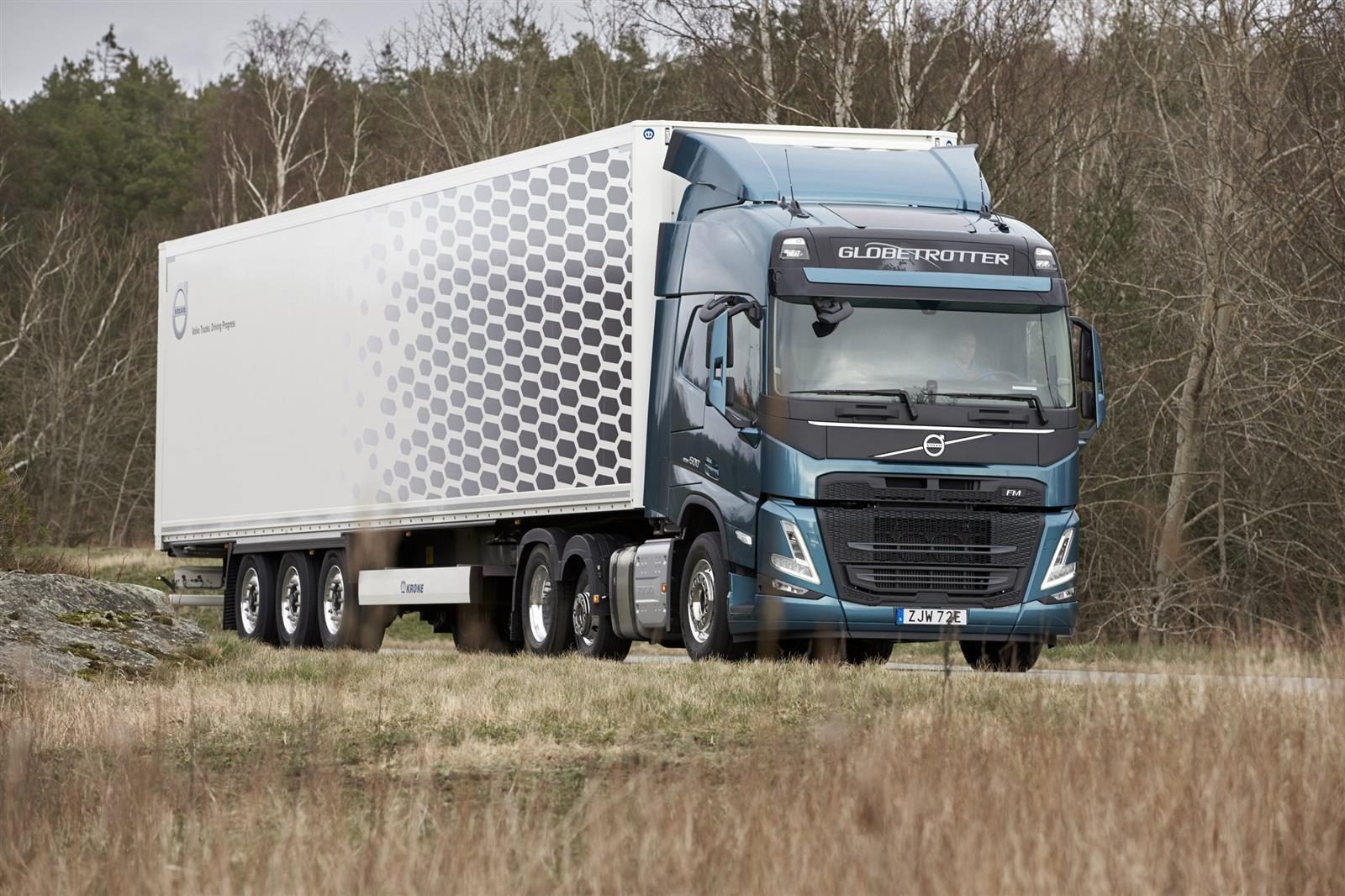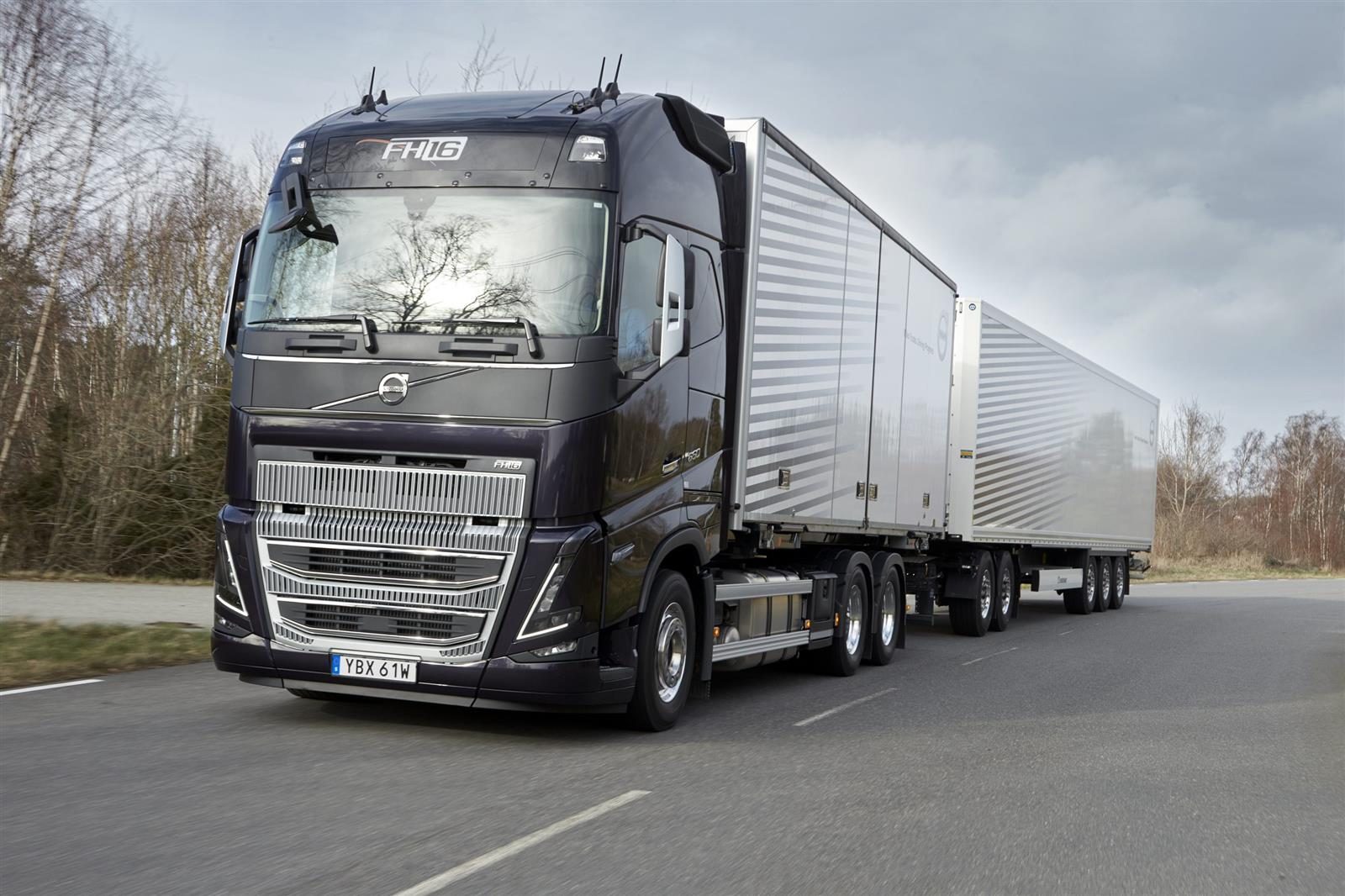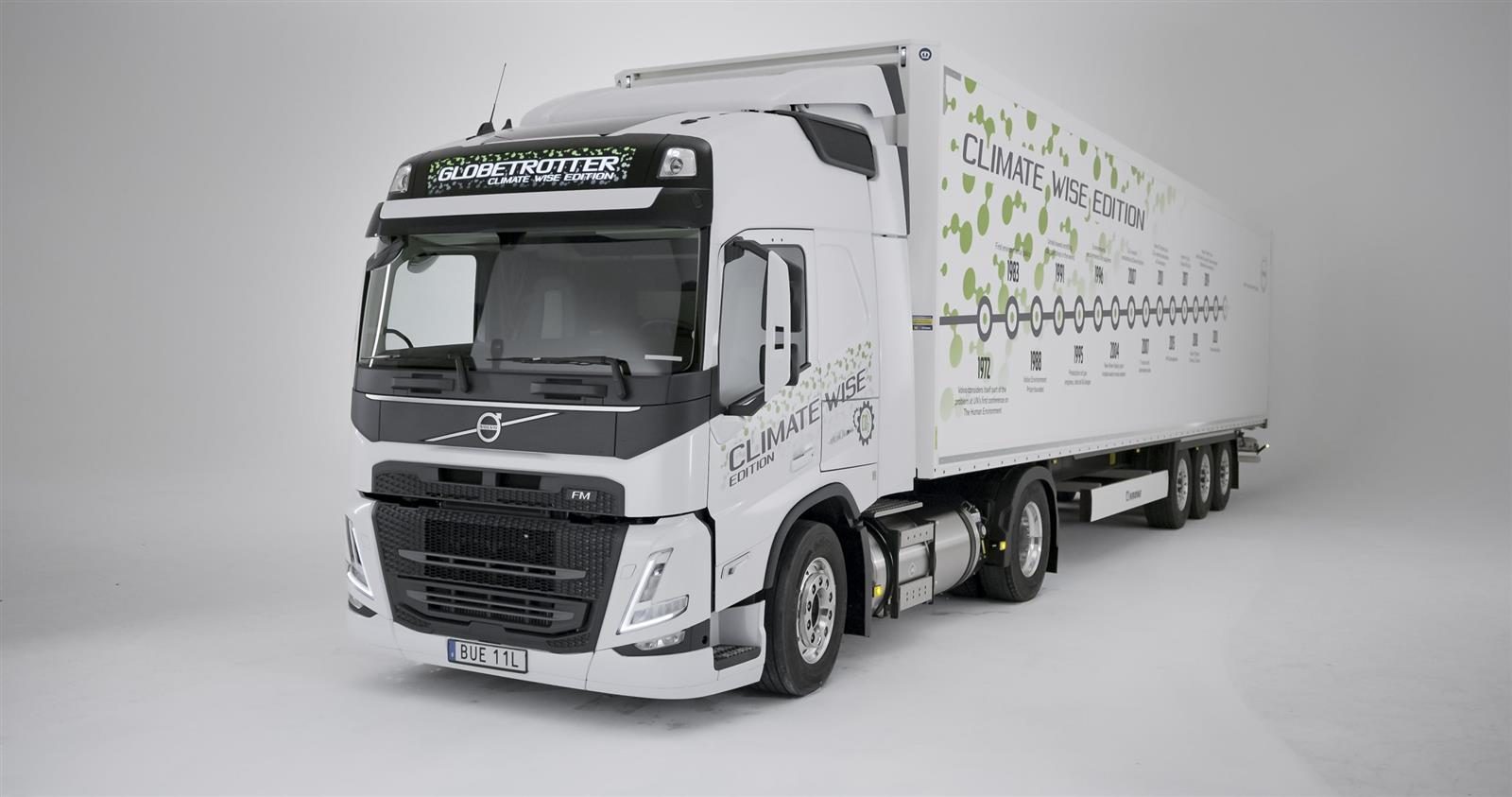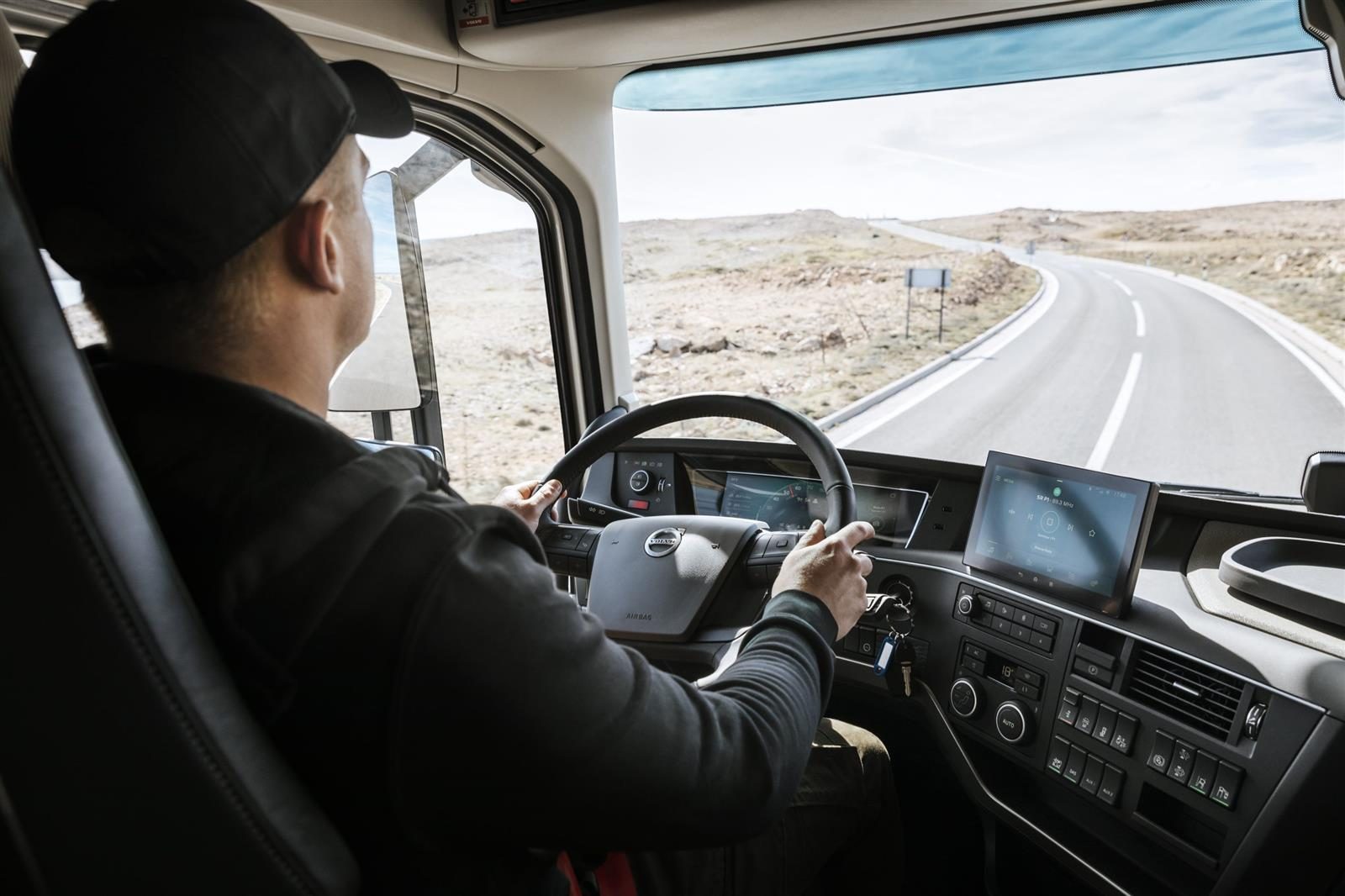Safe, comfy, clean, frugal, and chatty – swipe right

New FM. No more ‘Are you my Mother?‘ Family ties are clear.
Volvo Trucks beamed its new FM, FMX, FH, and FH16 trucks to the world last night (March 5th). The original intention was to have the world‘s media and special guests right there in Gothenburg, but alas the pesky microbe currently touring the world put paid to that.
Thankfully, it failed to spoil a significant launch in the OEM world. When Volvo murmurs the whole dinner table falls silent and everyone looks up to see what its doing. Like MAN last month, it was a review across a significant breadth of the company‘s model offerings that account for around two thirds of the giant‘s annual sales, so it needs to be right.

Big gear with headlights that look-after the on-coming.
In some ways Volvo has followed a similar path, spending money only where it was deemed needed. Unlike MAN‘s recent reveal however, the FM and FMX do get a whole new cab, not just a revamped interior. Front on it‘s different although it clearly follows foundation design queues, that‘s to say, ‘it‘s a Volvo‘. The side profile, though, is really different with new sill and door lines that make it look every bit the FH‘s vertically challenged sibling.
So, the big hits? Comfort, efficiency, environment, safety, and connectivity. No surprises you say? Just stay with us, there is a bit to talk about.
The cab interior has had a swathe of redesign with huge emphasis on driver comfort and appeal. Visibility is up by 10%, available space is improved, and noise is down. (In a Volvo? Yep, apparently.) There‘s also more storage (increased by 50% in the FH).
But the big thing for us was the dash. The Vikings head back toward a far more orthodox looking and, we have to say, appealing dashboard. A genuine, big, digital binnacle, and a proper wrap – it looks great! They‘ve opted for touch, voice, and steering wheel to control the infotainment. It was clear that managing the infotainment screen was agonising for Volvo and we can only imagine how many hours of robust debate went into it. This is the company we all genuinely believe when it says safety is in its DNA, and they were at pains to communicate the infotainment screen housed the functions that belong to tier two and three attention requirements.
Volvo has made it abundantly clear that all cards are still very much on the table when it comes to propulsion as well. The press material refreshingly emphasises combustion‘s efficiency and flexibility, and the more you read it the more it says:
“Both the environment and economics are important factors for haulage companies. As there will not be one singular energy source that addresses all climate change issues, and since different transport segments and assignments will require a variety of solutions, several types of drivelines will continue to exist in parallel for the foreseeable future.”
The new range sports Euro-6d power and Volvo says with the I-Save package (tuned, down-speed high-torque motors and matched rear-ends, I-Shift ,I-Roll, I-See) a 7% fuel saving and, in some instances, more is possible. (Bear in mind once again, this is Europe talking.)

Our purest child, Climate Wise. Combustion, that‘s flexible, efficient, and potentially 100% percent clean. ‘In your face batteries!‘
Not surprisingly, the main engine pitch was around the 13-litre D13TC engine but in defending the case for combustion against the ideological global circus around alternative powertrains, Volvo also pointed to its Climate-Wise trucks burning LNG. Built in a C02-neutral factory, and if fuelled by full bio-LNG, then recycled responsibly at end of life, the trucks are in fact climate neutral from beginning to end (steel‘s easier to recycle full circle than are batteries).
Talking alternative power, Volvo is pretty much aligned to everyone else: EV for urban and short middle-weight; diesel, LNG, and further down the road (maybe) hydrogen for line haul. All the usual challenges were cited in terms of legislation, infrastructure, and engineering standards.
What commentary on a new Volvo range would be complete without a proper mention of safety? The company has had a few attackers to the throne in recent years and you‘d have to say it‘s now game on to keep ahead. Having said that, we loved the quip from senior VP International Per-Erik Lindström in the midst of it all about the 750, reminding us that you can have it all if you want.
The FH and FH16 come with new LED headlights that adapt the full beam pattern in relation to oncoming traffic, keeping dazzle and glare to minimum and visibility to a maximum. Adaptive Cruise is jazzed up and now accommodates deceleration to zero, and descending control. EBS is standard throughout due to its implications in collision warning and emergency braking. Dynamic steering, lane keeping, and Stability Assist are optional. There‘s also road sign recognition, the information displayed on the dash. A real snazzy bit is the camera built into the bottom mirror mounts that show cycle and pedestrian danger zones as clear as day. And, yes, the fact they‘re located in the mirror mounts answers the next question…yes, they still have mirrors.
Connectivity, was real ‘biggy‘ and Volvo is in boots and all on this one with information between truck, owner, and Mother V driving many of the efficiency gains. And we‘re not just talking predictive servicing, but tailored predictive servicing as per the client‘s work profile and behaviours. All this sharing leads to great efficiencies, things like longer up time and oil drain intervals (50% longer in some cases).
“With the new Volvo FH we are continuing our clear focus on designing trucks and offering services that can help drivers do a world-class job,” says Roger Alm, president of Volvo Trucks.”

The new ‘driver interface‘…aka, dash. Yes, that looks a lot better.
So, when‘s it here? We asked general manager Volvo Trucks New Zealand, Clive Jones.
“The timeline is yet to be set. Now that the models have been released in Europe, we in conjunction with our Australian production facility will commence working on the model specifications, options and configurations for New Zealand. That process will take some months, at which time we will be able to provide a guideline on introduction. For the foreseeable future it‘s the current model line-up – certainly all of 2020 anyway.
“The new model will remain with Euro 5 as standard at the time we introduce it into New Zealand but with some models available optionally at Euro 6, as we can currently.
“This additionally means we retain the reliable and trusted driveline we currently offer, which is extremely well accepted here, including our I-Shift transmission, while still moving to the fresh cab platform and additional connected type services aimed at driving fuel efficiency and up time.”
Check out a full report in an upcoming New Zealand Trucking magazine.
Read more
Confidence in coal
0 Comments5 Minutes
Energy is everything
0 Comments7 Minutes
Moving to mobile
0 Comments6 Minutes





